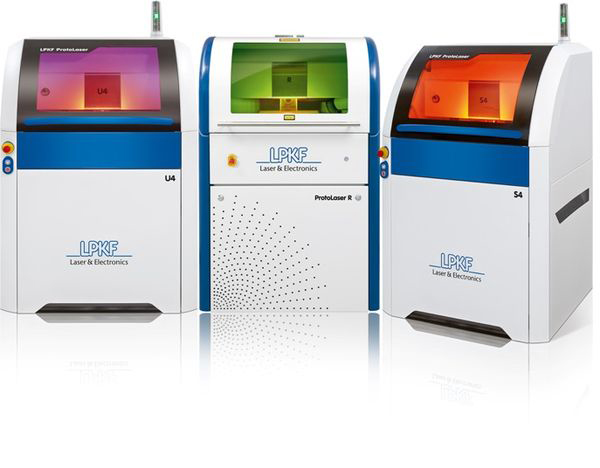FPCB Prototyping: the "right" ProtoLaser for every material
Printed circuit boards made of flex materials (polymers) are recommended for components that require little space, moveable electronics or fast data connections. They are used for signal transmission or wiring and are often used in combination with rigid printed circuit boards. Typical applications include LED lighting, PC and mobile antennas, various sensors and wearables.
Polyamide offers high mechanical stability, wide temperature ranges and chemical resistance. Foil polymers such as polyester (PET), polyethylene (PEN, PEI) and fluoropolymers are increasingly being used. Machining these materials is often demanding. LPKF ProtoLasers play a key role in the prototyping of flexible PCBs. LPKF has carried out various tests to determine which laser is best suited for which material application.
Processing was carried out with the ProtoLaser U4, ProtoLaser S4 and ProtoLaser R - with significantly different results. Materials used: the polyimide core material Kapton® from DuPont™, DuPont™ Pyralux® (Pyralux® TK and Pyralux® AP), Mylar® PET and a polyamide from the Kempel group. LPKF published the results in the technical report "Fast Prototyping of flexible PCBs using LPKF ProtoLaser".
ProtoLaser for every material
Flexible printed circuit boards have been the solution for connections that need to be movable, that require little space and/or weight, or that require a fast data connection. They usually have only the passive function of transmitting signals. They replace cables and are often found as a part of switches in keyboards, in LED lighting, PC and mobile antennas, various sensors such as motion controls or drug delivery sensors and in wearables.
Flexible PCBs - typically based on a thin polyimide (PI) film - are multifunctional and can be produced as a single, double or multilayer with plated through holes and surface treatment similar to rigid circuit boards. LPKF ProtoLasers play a key role in the prototyping of flexible PCBs. LPKF has carried out various tests to determine which laser system is best suited for which material application.



